Laminate floor separation often happens due to changes in humidity and temperature, which cause the planks to expand and contract. Improper installation, such as not leaving adequate expansion gaps or misaligned planks, can also lead to gaps forming over time.
Heavy furniture, daily wear and tear, or water damage from spills or leaks can weaken the locking system, causing the planks to shift apart. Regular maintenance, stable indoor conditions, and proper installation techniques can help prevent this issue. If gaps appear, quick fixes like adjusting humidity, using a floor gap fixer, or replacing damaged planks can restore your flooring’s appearance.
Common Causes of Laminate Floor Separation
Laminate flooring is a popular choice for its affordability, aesthetic appeal, and ease of maintenance. However, like any flooring material, it is not immune to issues. One of the most common problems homeowners face is laminate floor separation. This issue occurs when the planks pull apart, leaving unsightly gaps that can affect both the look and function of your floor.
A. Humidity and Moisture
Humidity and moisture are among the most significant culprits behind laminate floor separation. Laminate flooring consists of a high-density fiberboard core, which is susceptible to swelling and shrinking when exposed to excessive moisture.
During humid seasons, the increased moisture in the air can cause the laminate planks to swell. Conversely, during drier conditions, the planks may contract, leaving noticeable gaps between them. Accidental water spills or leaks from appliances can exacerbate the problem. If moisture seeps into the flooring, it can weaken the adhesive or cause the planks to warp.
To prevent this, it’s crucial to control the indoor humidity level, ideally keeping it between 35% and 55%. Using a dehumidifier in humid climates or a humidifier in dry conditions can help maintain the stability of your laminate flooring.
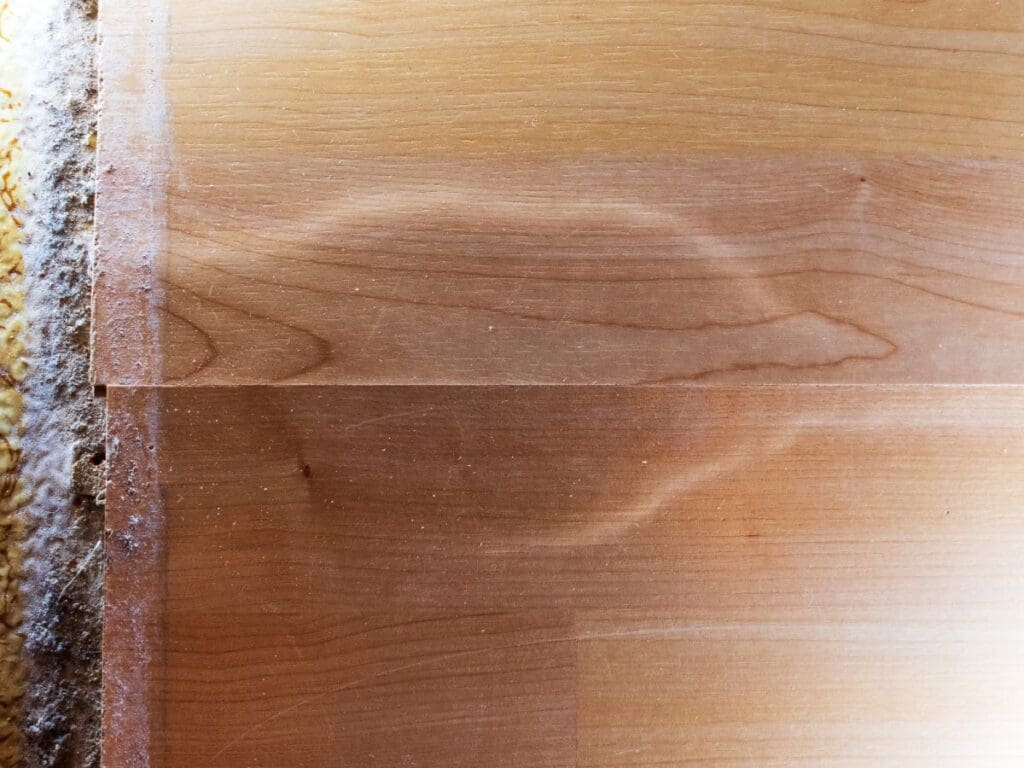
B. Temperature Fluctuations
Drastic changes in temperature can also lead to laminate floor separation. Like wood, laminate expands and contracts with changes in temperature. If the flooring is installed in a room that experiences extreme fluctuations—such as a sunroom or an unheated basement—this movement can loosen the planks over time.
Seasonal changes are another factor. In winter, when homes are heated, the dry indoor air can cause the laminate to shrink. In summer, the heat and humidity can cause it to expand. This constant expansion and contraction stress the interlocking system of the planks, leading to separation.
Installing laminate in a temperature-controlled environment is one way to mitigate this issue. Additionally, leaving a small expansion gap around the room’s perimeter during installation allows the flooring to expand and contract without causing separation.
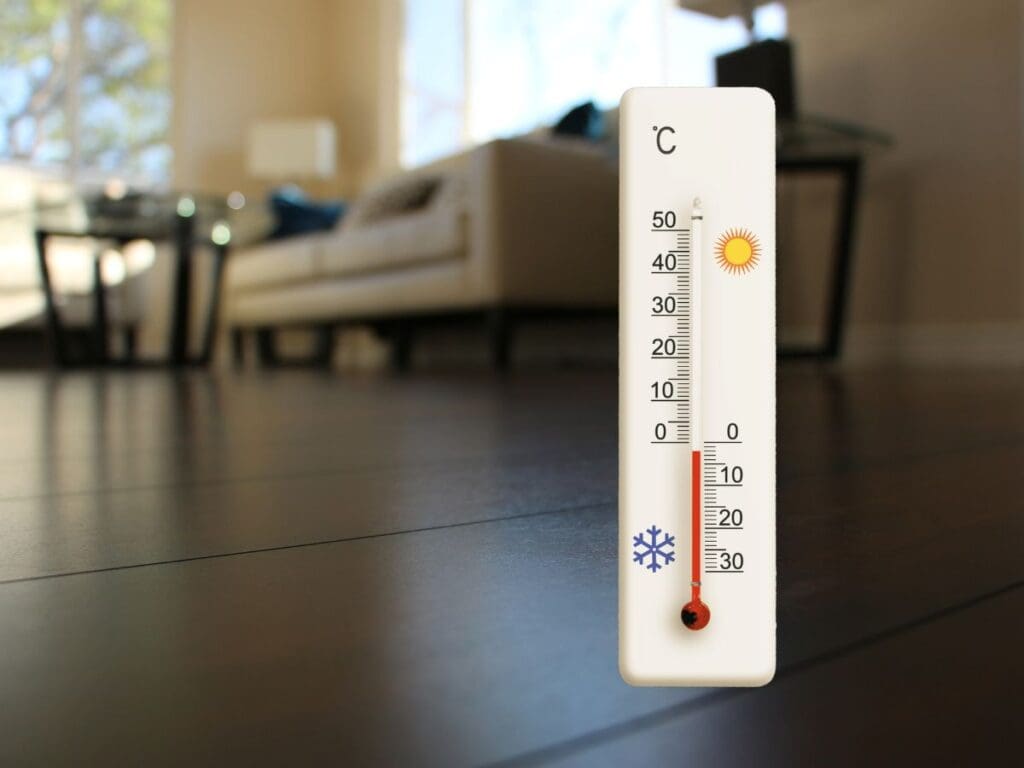
C. Poor Installation
Improper installation techniques are a leading cause of laminate floor separation. Laminate flooring is designed to float, meaning it is not glued or nailed down but rather relies on the planks locking together. If the planks are not properly aligned or securely locked, they may shift over time, creating gaps.
Skipping essential steps, such as acclimating the laminate planks to the room’s temperature and humidity before installation, can also lead to problems. Additionally, failing to leave an expansion gap around the room’s edges can cause the planks to buckle or separate when they expand.
To avoid these issues, ensure the installation is done by experienced professionals or follow the manufacturer’s guidelines meticulously. Proper subfloor preparation and the use of underlayment can also improve the stability of the flooring.
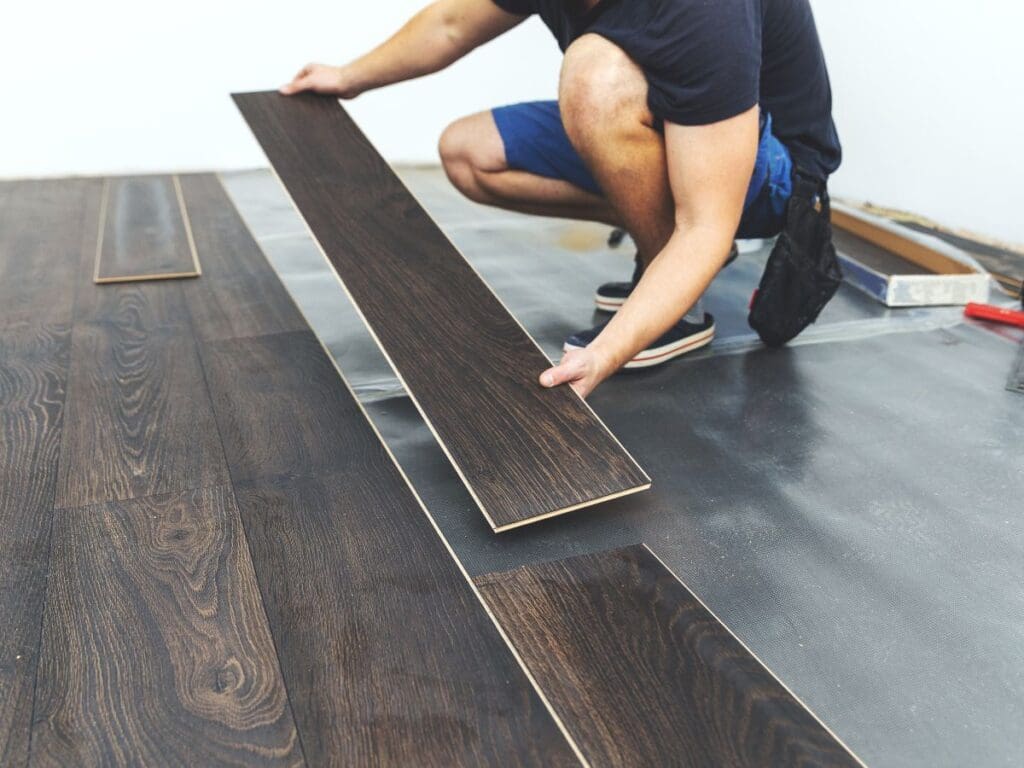
D. Heavy Furniture or Appliances
Heavy furniture and appliances can inadvertently cause laminate floor separation. When a large object is placed on the floor, it applies uneven pressure to the planks. This can disrupt the interlocking system, especially if the furniture is dragged across the floor.
Over time, the weight of heavy furniture can also compress the planks, causing them to lose their tight fit. This is particularly true for laminate flooring that isn’t reinforced with high-quality locking systems.
Using furniture pads or sliders can help distribute weight more evenly and prevent damage. If you need to move heavy furniture, always lift it rather than dragging it to avoid stressing the flooring.
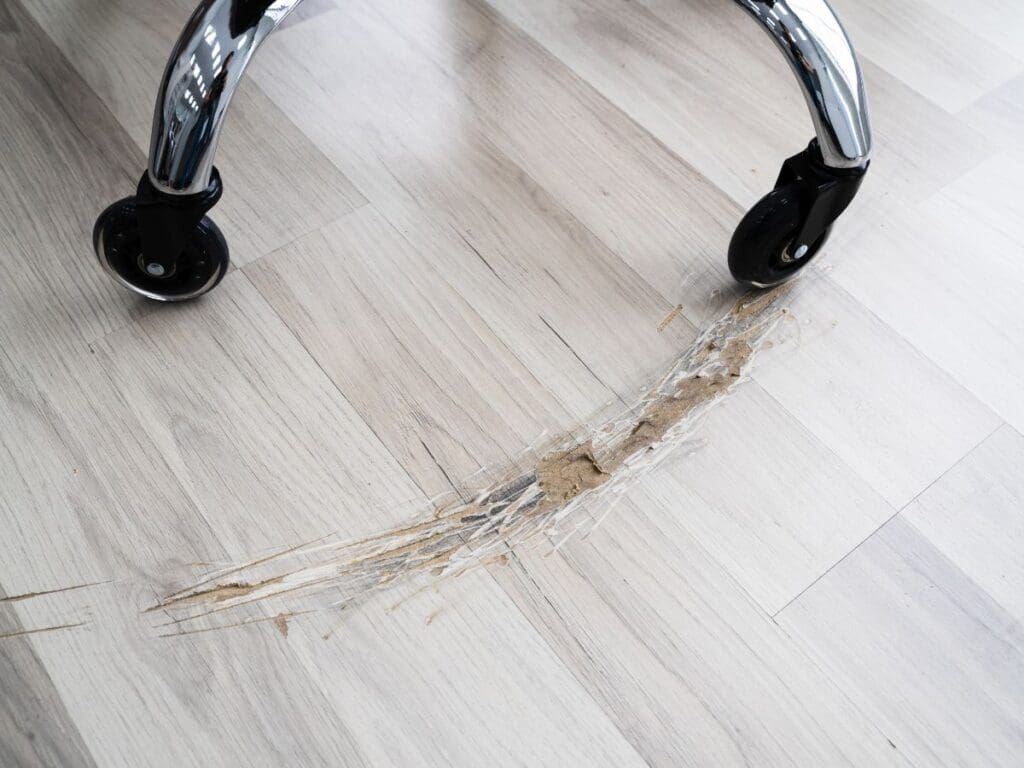
E. Wear and Tear
General wear and tear is an unavoidable aspect of any flooring material, and laminate is no exception. Over time, the constant foot traffic, pet claws, and shifting furniture can wear down the locking mechanisms of the planks. As the edges become worn, they may no longer hold together as tightly, leading to gaps.
Additionally, floors that are poorly maintained or cleaned with excessive water can deteriorate faster. Abrasive cleaning tools and harsh chemicals can also weaken the planks and contribute to separation.
To reduce wear and tear, use rugs or mats in high-traffic areas, clean the floor regularly with a damp—not wet—mop, and avoid harsh cleaning agents. Regular maintenance can prolong the life of your laminate flooring and keep it looking its best.
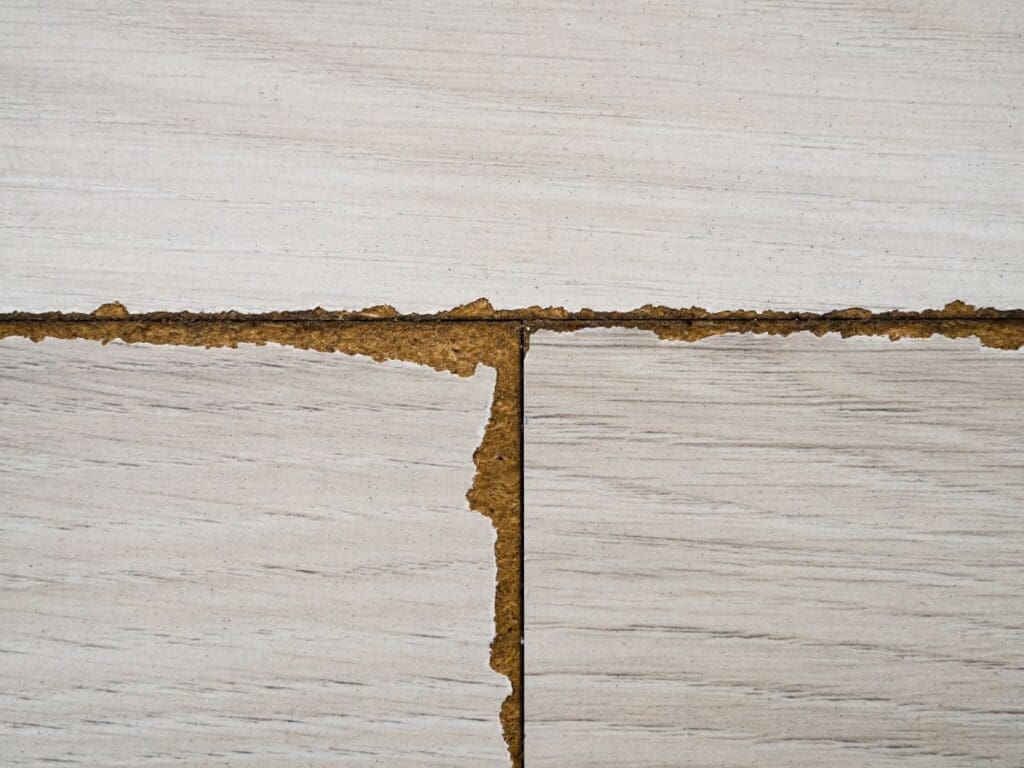
Quick Fixes for Laminate Floor Separation
Laminate flooring is a popular choice for many homeowners, but issues like separation between planks can arise over time. While these gaps can be frustrating, they’re often fixable with a bit of effort and the right approach. Below, we explore quick fixes for laminate floor separation, addressing common methods to restore your floor’s appearance and functionality.
A. Adjusting Humidity Levels
Humidity plays a crucial role in the stability of laminate flooring. Excessively high or low humidity levels can cause the planks to swell or shrink, leading to gaps between them. One of the simplest ways to fix separation issues is to stabilize the indoor humidity.
- Use a humidifier or dehumidifier: In dry conditions, a humidifier can add moisture to the air, helping the planks expand and close the gaps. Conversely, a dehumidifier can reduce excess moisture in humid environments, preventing swelling.
- Maintain optimal humidity levels: Aim for indoor humidity between 35% and 55%. This range minimizes the expansion and contraction of the flooring.
- Seal windows and doors: Prevent drafts or moisture infiltration by ensuring windows and doors are properly sealed.
By maintaining a consistent indoor environment, you can prevent further separation and protect your laminate flooring.
B. Repairing Gaps
If gaps have already formed, there are several methods to close them quickly and effectively. The tools and techniques you choose depend on the size of the gap.
- Pulling the planks together: Use a floor gap fixer tool, which is a rubber block designed to gently tap the planks back into place. Attach the tool to one side of the gap and use a mallet to apply pressure until the gap closes.
- Filling small gaps: For tiny gaps, use a laminate floor gap filler or wood putty that matches the color of your flooring. Apply the filler with a putty knife and smooth it out for a seamless finish.
- Securing loose planks: If the gaps are due to planks shifting, apply a small amount of wood glue along the tongue-and-groove edges and press the planks together. Wipe away any excess glue and allow it to dry completely.
These repairs are quick and can significantly improve the floor’s appearance.
C. Replacing Damaged Planks
Sometimes, the best solution for separated laminate flooring is to replace damaged planks. This fix is ideal when the planks are warped, cracked, or have persistent gaps that cannot be repaired.
- Locate the damaged plank: Identify the plank that needs replacing and determine whether it’s along the edge or in the middle of the floor.
- Remove the plank: If it’s near the edge, carefully remove the baseboard and lift the planks until you reach the damaged one. For planks in the center, you may need to cut out the damaged piece with a utility knife or saw.
- Install a new plank: Ensure the replacement plank matches the rest of the flooring. Snap it into place or glue it down, depending on the type of installation.
- Reassemble the floor: Replace the surrounding planks and secure the baseboard.
Replacing a damaged plank requires some effort, but it restores the floor’s integrity and prevents further issues.
D. Reinforcing the Installation
Poor installation can cause laminate floor separation over time, but reinforcing the flooring can provide a long-term solution.
- Add an expansion gap: If the planks are separating due to insufficient room for expansion, trim the edges of the flooring to create a small gap near the walls. This allows the flooring to expand and contract without pulling apart.
- Use transition strips: In large rooms, use transition strips to divide the flooring into sections. This reduces the strain on the planks and prevents separation.
- Install underlayment: A high-quality underlayment provides additional support and cushioning, reducing movement and keeping the planks in place.
Reinforcing the flooring ensures a more stable installation and minimizes the risk of future issues.
E. Regular Maintenance Tips
Preventing laminate floor separation starts with regular care and maintenance. By keeping your flooring in good condition, you can avoid common issues and extend its lifespan.
- Clean spills promptly: Moisture is one of the leading causes of separation. Wipe up spills immediately to prevent water from seeping into the planks.
- Avoid excessive water: Use a damp mop instead of a wet one to clean the floor, as too much water can weaken the laminate.
- Protect high-traffic areas: Place rugs or mats in areas with heavy foot traffic to reduce wear and tear.
- Use furniture pads: Heavy furniture can stress the planks, so use pads to distribute the weight evenly.
- Inspect the floor regularly: Check for signs of damage or separation and address issues as soon as they appear.
Consistent maintenance is key to preventing laminate floor separation and preserving its aesthetic appeal.
When to Seek Professional Help
Seeking professional help for laminate flooring issues is essential when you notice persistent gaps that can’t be fixed with simple DIY methods, extensive water damage, or warped planks. Signs like uneven flooring, recurring separation, or damaged locking mechanisms also indicate the need for expert intervention. Hiring a flooring professional ensures accurate diagnosis of the problem, proper repairs, and long-lasting results.
Experts have the tools and knowledge to address underlying issues, such as subfloor problems or poor installation, effectively. Their expertise not only restores your floor’s functionality and appearance but also prevents future issues, saving you time and money in the long run.
How to Match Flooring with Your Home’s Décor
Choosing the right roofing material is as crucial as selecting the perfect flooring to complement your home’s décor. Just as flooring sets the tone for your interiors, your roof plays a vital role in your home’s overall aesthetic and energy efficiency. From synthetic options that mimic traditional styles to eco-friendly green roofs and innovative solar tiles, modern roofing materials offer a variety of choices to enhance your home’s appeal.
By considering factors like climate, budget, and design preferences, you can ensure that both your flooring and roofing harmoniously elevate your living space. Happy decorating!


